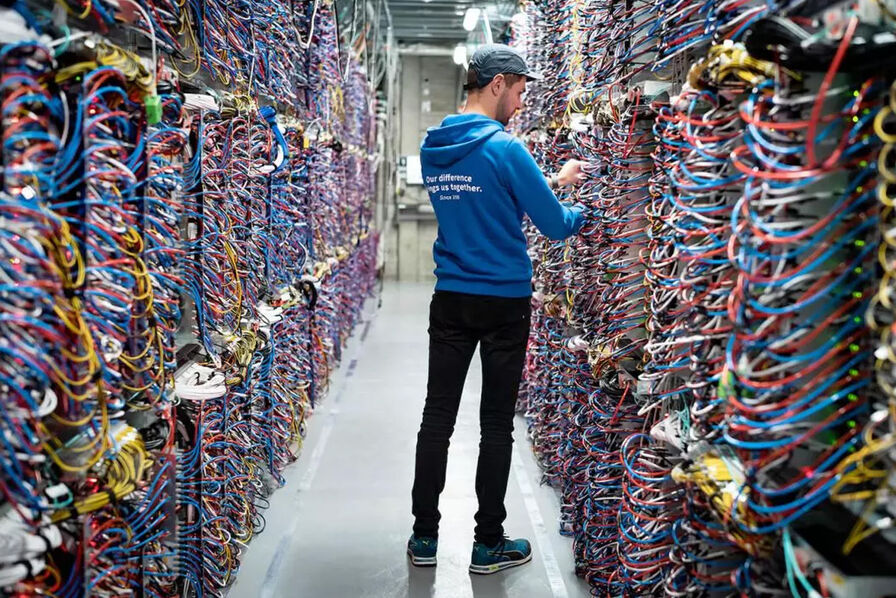There’s no doubt that the news headlines about the environment and sustainability topics make for fairly grim reading these days. According to the ONS, June 2023 was recorded as the hottest temperatures for the month in decades. The average weather forecast for the last five and ten years have been the highest set on record. Here are a few tips you can use to build your own effective sustainability strategy.

The most important reason to embrace sustainability is that not doing it will make our world more and more uninhabitable. The datacentre industry has a particular responsibility in terms of global warming. According to ARCEP, the digital world accounts for three to four percent of global greenhouse gas emissions. Within these, the cloud accounts for approximately fifteen percent. To compound the matter, a 15MW datacentre uses an average sum of 390,000 gallons of water a day! This may cause profound pressure on local water resources. More sustainable, OVHcloud water-cooled sites can reduce this to around 55,000 gallons.
If we are willing to make significant progress, we’re going to have to be honest about it. And as anyone who works in the construction industry knows, you can’t build on shaky foundations.
Trouble with transparency
With the quality improvement disciplines of Kaizen and Six Sigma introduction in 1986, many organisations were able to radically improve their operations. Motorola, for example, saved up over £13bn by using the two methods together. Over half of the Fortune 500 uses elements of each to optimize how they operate.
However, very few – if any – observers shouted about how these organisations had created waste or spent money wrongly prior to adopting new approaches. This is not the case with sustainability.
There’s no doubt that we stand at an urgent and pivotal moment in the course of the world’s approach to sustainability. That said, it’s critical to point that a culture of shaming organisations in the process of genuine change is counterproductive. Stern approaches are – of course – necessary for wasteful, inconsiderate organisations that prioritise profit over the environment, but it doesn’t help to heap shame on businesses on their journey to a sustainable future. We need to encourage a culture of change, not embarrassment.
And let’s be honest: being open about sustainability and carbon emissions is not an easy thing. Changing organisations for the better is a complex, political and often expensive journey. If we are to build a sustainable future, we need both an honest, solid foundation and a radical commitment to transparency. Perhaps this is an unfashionable view. But we’re all adults here – we know that change is hard, sustainability is complex, and cloud migrations don’t happen overnight!
Furthermore, a strong sustainability strategy can have many benefits. It can reduce power bills. Re-using old components means not buying new ones. Over a third (38%) of businesses would reject a supplier with a poor (or no) ESG strategy. This tends to show that sustainability can clearly be more than just a cost-centre when done correctly.
So, yes, a culture of frankness and transparency can and will open up uncomfortable areas for improvement but it can also create a virtuous circle of continuous change. It requires a broad bench of business stakeholders to truly examine ‘everything the light touches’ but by breaking it down into discrete boxes, it becomes more manageable.

How to establish a transparent approach to sustainability?
Creating an effective sustainability strategy is a complex and multifactorial endeavour, but the first step requires accurate measurement. It’s currently a prerequisite for large organisations in the UK to declare their Scope 1 and Scope 2 emissions. Surprisingly enough, not Scope 3. Yet, Scope 3 emissions tend to be the biggest tree in the woods. For instance, OVHcloud’s scope 3 represent 55% of its total emissions, but it is more difficult to measure.
But once organisations have this understanding, it’s incredibly informative. For us, the carbon footprint associated with IT component manufacturing represents 41% of our total carbon footprint, with electricity representing 42%. This often surprises people but it actually underlines my point. Unless you have a complete understanding of your emissions, you can’t possibly hope to probe the battlefield effectively. Given that we’re on the same team and fighting the same enemy, it’s doubly important that we measure and monitor data consistently. Meaning, using industry-agreed benchmarks assessment standards like PuE and WuE, within established frameworks like ISO standards.
My proposed approach to measurement tends to shine a light on many areas that organisations have not considered. However, if we can embrace this methodology standard, we will improve our ability to tackle the real carbon problem. Not just the easy, visible one. That said, there are a number of factors that can make the journey easier:
- Executive Sponsorship: Sustainability and transparency need to be considered at every level. If there isn’t buy-in from the datacentre manager and the C-suite. It’ll be an uphill struggle. Leaders with a sustainability and transparency-first mindset can create a culture of honesty and sustainability. This is key to permeate everything the company does.
- Community: Radical transparency often reveals problems that organisations can’t solve by themselves. For example, recycling server motherboards and component packing foam is extremely challenging, but there are startups focused on exactly these issues. Similarly, there are many third parties that offer consultancy around effective emissions measurement and that can help with establishing sustainability strategies.
- Avoidance is Better: Recyclingis good, but re-use and purchase avoidance is better. For example, re-using old (well-tested!) server components in slower, low-cost servers is better than disassembling and recycling the metals and plastics, although the latter is necessary eventually. At the same time, moving into an existing building is better than commissioning a new build (where possible). Construction has a very significant carbon footprint.
- Data isn’t (always) Knowledge: Even with effective measurement, teams may often have to admit that they just don’t know things. For example, it can be difficult to assess whether a certain level of performance is good or bad. In some cases, you may have to wait for the ecosystem to catch up. But by putting a stake in the ground, you’re establishing a point of comparison and a benchmark for the industry to improve on or aspire to.
- Concrete Targets: Committing to external carbon and water-efficiency targets and joining initiatives like the Climate Neutral Datacentre Pact is a public commitment to sustainability, and a show of accountability. It shouldn’t be seen as something to be ‘held over’ you – rather, it’s a motivator and goal. However, it’s crucial that these targets are set within public frameworks (for example, ISO standards) so that we’re all measuring in the same way.
- Celebrate Success: Transparency and sustainability are exceptionally challenging for datacentre organisations – we use a lot of electricity and have a significant carbon footprint. However, it’s also important to celebrate success when targets are achieved to maintain motivation and momentum going forward.
There’s no question that radical transparency is an uncomfortable and difficult process. Operating within stringent boundaries and finding creative solutions to issues will unquestionably challenge our teams, leadership organisations and established new ways of thinking.
If we can take up to the challenge and create a continuous cycle of improvement, then adopting new sustainability strategies will lead us as an industry in an interesting, profitable, exciting, and more importantly, incredibly necessary and meaningful direction. And that is a very, very worthwhile goal indeed.

Gregory Lebourg
